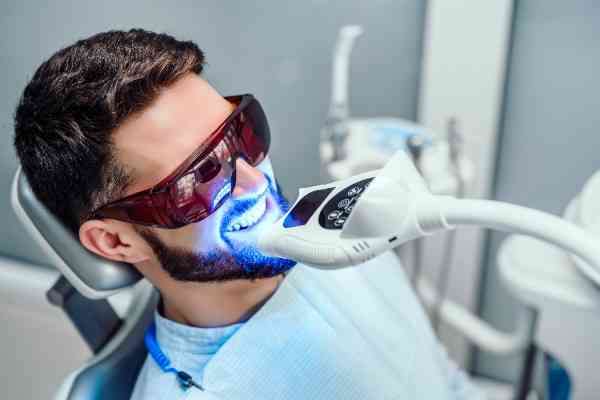A bright, white smile is often seen as a symbol of good health and confidence. As one of the most sought-after cosmetic dental treatments, teeth whitening offers a way to reverse the effects of staining caused by age, diet, and lifestyle choices. If you’re considering improving your smile, understanding the various types of teeth whitening options is essential. This comprehensive guide will help you differentiate between the main types of whitening treatments available today, how they work, who they suit best, and what kind of results you can realistically expect, whether you’re consulting a dentist in Cambridge or browsing over-the-counter products.
Why Teeth Become Discoloured
Before diving into whitening options, it's helpful to understand why teeth lose their natural whiteness. Common causes include:
- Food and drink: Coffee, tea, red wine, and dark berries can stain enamel.
- Smoking: Tobacco leads to yellow or brownish teeth.
- Poor oral hygiene: Infrequent brushing allows plaque and tartar to build up.
- Aging: The enamel thins over time, revealing the yellow dentin beneath.
- Medications: Certain antibiotics, like tetracycline, can cause intrinsic stains.
- Trauma or disease: Injuries or illnesses affecting enamel and dentin can darken teeth.
Understanding the source of discolouration helps in selecting the right treatment. Not all stains respond the same to whitening, especially if they are internal or caused by medications.

1. In-Office Professional Whitening
This is the most effective and fastest method available. Performed by a dentist in Cambridge, in-office whitening uses a high concentration of hydrogen peroxide or carbamide peroxide gel activated by a special light or laser.
Advantages:
- Immediate results, usually within one session.
- Safe and monitored by professionals.
- Deep stains can be targeted effectively.
Considerations:
- More expensive than at-home methods.
- May cause temporary sensitivity.
- Not suitable for those with untreated cavities or gum disease.
2. Custom Take-Home Whitening Kits
Many dental practices offer take-home kits designed specifically for the patient. These kits include a custom-fitted tray and professional-grade whitening gel.
Advantages:
- Stronger and more effective than store-bought kits.
- Can be used at your convenience over 1–2 weeks.
- Reduced risk of gum irritation due to a snug tray fit.
Considerations:
- Results take longer compared to in-office procedures.
- Requires discipline to follow usage instructions.
- Best suited for mild to moderate staining.
Patients often appreciate the balance of safety, effectiveness, and affordability offered by custom take-home kits from a dentist in Cambridge.
3. Over-the-Counter Whitening Strips
Whitening strips are one of the most popular at-home whitening products. These thin, flexible plastic strips are coated with a layer of peroxide-based gel and applied directly to the teeth.
Advantages:
- Easy to use and widely available.
- More affordable than dentist-provided kits.
- Moderate improvement in tooth shade.
Considerations:
- Not customised, so uneven whitening can occur.
- Higher chance of gum irritation.
- Results are slower and less dramatic.
4. Whitening Toothpaste
Unlike traditional whitening treatments, whitening toothpastes don't contain peroxide. Instead, they use mild abrasives and polishing agents to remove surface stains.
Advantages:
- Convenient to use as part of a daily routine.
- Safe for enamel with long-term use.
- Good for maintaining previous whitening results.
Considerations:
- Minimal whitening effect.
- Not effective on deeper or intrinsic stains.
- It can take weeks or months to see any visible difference.
This option is best used as a supplement to other treatments, not as a primary whitening method.
5. Whitening Mouthwashes
These mouth rinses usually contain hydrogen peroxide and are marketed as a way to brighten teeth over time.
Advantages:
- Freshens breath and contributes to overall oral hygiene.
- Easy to incorporate into daily routines.
- Mild whitening effect.
Considerations:
- Requires prolonged, consistent use.
- Results are generally subtle.
- Not suitable for those looking for quick or noticeable change.
While not powerful on their own, whitening mouthwashes can support and maintain other treatments.
6. Whitening Pens
Whitening pens are small tubes filled with gel that you brush directly onto your teeth. They’re marketed for on-the-go touch-ups and travel.
Advantages:
- Convenient and portable.
- Useful for targeting specific teeth or areas.
- Quick application process.
Considerations:
- Limited whitening effect.
- Often short-lived results.
- Risk of uneven application.
Best suited for people who want a quick aesthetic boost before photos or events, whitening pens are not a substitute for comprehensive whitening treatments.
7. Natural or DIY Methods
Baking soda, activated charcoal, and oil pulling are among the most common natural whitening methods.
Advantages:
- Inexpensive and easy to try at home.
- Perceived as "natural" alternatives.
Considerations:
- Limited scientific evidence for long-term results.
- Risk of enamel erosion if overused.
- May cause gum irritation or imbalance in oral flora.
These methods should be approached cautiously. Consulting with a dentist in Cambridge is recommended before using any DIY whitening approach to avoid harming your teeth.
What’s the Best Option for You?
The best whitening treatment depends on your specific needs, lifestyle, and budget. Ask yourself:
- Do you want immediate results, or are you okay with a gradual process?
- Is professional supervision important to you?
- Are you maintaining previous whitening or starting from scratch?
A consultation with a dentist in Cambridge can help assess the severity and type of discolouration, ensuring you choose a method that offers safe and visible results.
Factors That Affect Whitening Results
Even the most advanced treatments won’t work the same for everyone. Factors influencing outcomes include:
- Enamel thickness
- Type and depth of stains
- Age
- Existing dental work (e.g., crowns or veneers)
- Consistency in oral hygiene habits
Are There Any Risks?
While teeth whitening Cambridge is generally safe when performed or recommended by professionals, risks include:
- Tooth sensitivity
- Gum irritation
- Uneven results if whitening agents miss parts of the enamel

These side effects are usually temporary and manageable with the guidance of a dental professional. That’s why it’s advisable to avoid overuse of store-bought products or untested remedies.
Conclusion
Teeth whitening is not a one-size-fits-all solution. From professional in-office treatments to home-use kits and toothpaste, there’s a wide range of options, each with its pros, cons, and best-use cases. Whether you need subtle maintenance or dramatic change, the best path forward starts with expert advice. If you're looking for personalised guidance and effective treatments for Teeth Whitening Cambridge, the team at EDC combines clinical expertise with patient-centred care. As a trusted dentist in Cambridge, we help you choose the safest and most suitable option to brighten your smile with confidence.



